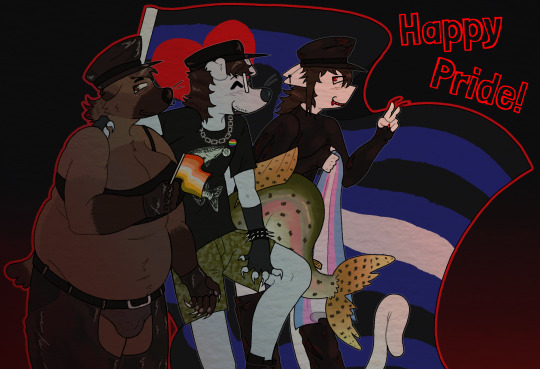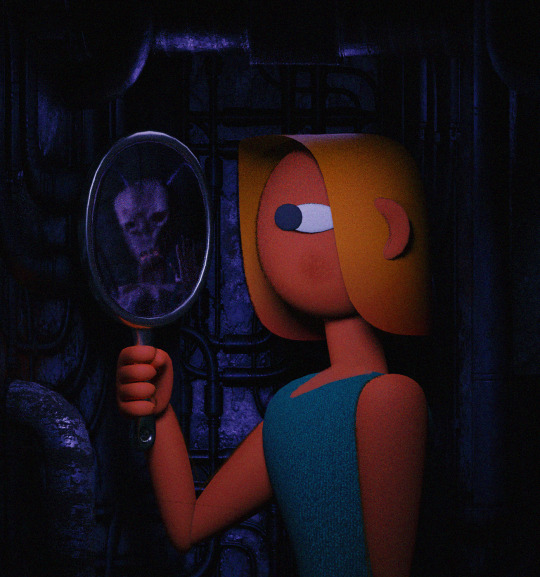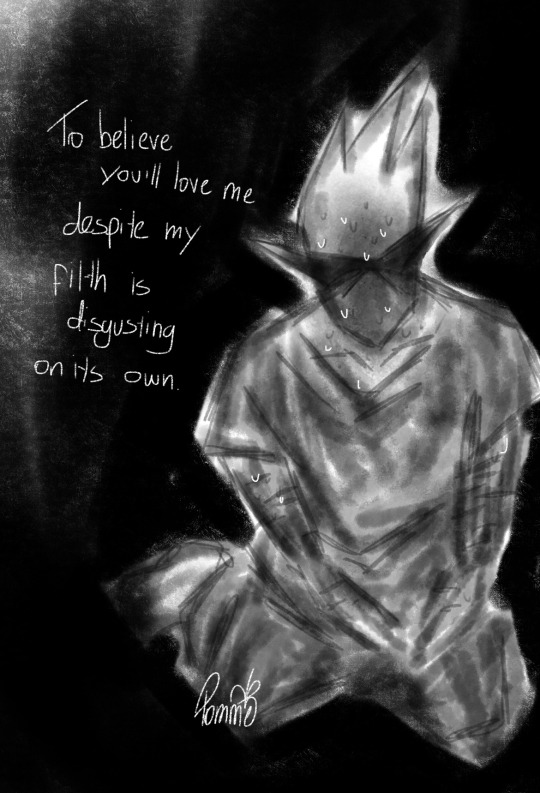Zwei (pictured above)(not real name) is an independant artist & lover living in the placid dephts of pseudo-rural France. Passionate about art, nature, godhood and critical questions of our time such as "What to eat for dinner tonight", he seeks to make the internet nerdosphere happier and more fullfilled with wacky technological, metaphysical, biological and downright tentacular fictional adventures. But, you inquire, how come this guy has eight limbs ? And no bones ? And a fascinatingly large and decentralized nervous system ? And camera-like eyes similar to those of vertebrates ? I don't think he's an author at all ! This is where you are mistaken, my friend, because this is precisely where the magic happens... Leviathan / King of the Depths, Lord of Matter is in the works. Stay tuned. It will take a while. (co2bilanz on instagram - same stuff, more community interaction !) 151 870 511
Don't wanna be here? Send us removal request.
Text

PULSE
#art#oc#151 870#digital art#original#oc art#artists on tumblr#leviathan#lee#transmasc#transmasc art#trans art#transgender art#eyestrain#nudity warning#Bruh i'm barely on tumblr anymore here's a Lee
16 notes
·
View notes
Text
Have you lost a family member and felt the pain of regret and loss?! 😭
I hope you don't; for me this is our reality. Every day we lose someone we love 💔😔
Last year I lost my uncle and his entire family in a missile attack on his displacement site in Rafah, and Al Jazeera YouTube reported.
Today, I am in pain as I miss the dearest to my heart, my father, who suffered from a stroke that caused him quadriplegia. He could not cope with the catastrophic life as we lived in a tent that was like a grave. His weak body was exposed to malnutrition as a result of not providing the necessary food for his condition, and the severe cold caused him to have a heart attack that led to his immediate death.
I wake up terrified every night. I check on my family, whom I fear will die of cold 🥶😰
And it was not limited to this, but our tent that shelters my family, children, and my brother Samer, who suffers from a chronic illness, was flooded and swept away under the dirt as a result of the heavy rains. Our tent has become worn out and does not protect us from the winds and rain ⛈️⛺


Please save What's left of us, share with us, and if you can, a donation can save an entire family from death ❣️🙏
My campaign verified by:
@dlxxv-vetted-donations & @a-shade-of-blue
@gazavetters , my number the list is ( #75 )
paliliberation , my number the list is ( #171 )
Our important links here


Imagine a tent measuring 4 x 4 and 11 people live in it.
19K notes
·
View notes
Text
Cancer is the number one cause of death in the world.🥹🥲💔
Be a compassionate person.. and help my father travel to receive treatment 🥹🥲💔

In light of the genocidal war that we lived in Gaza, and the medical neglect and scarcity of necessary materials and medicines, my father was suffering from severe pain in his body, especially severe colic, so he underwent an urgent operation in order to find out the cause of the colic that had accompanied him for months, and after the operation, it was determined by cholesterol and it became clear that there were three masses that were the main cause of the pain he was suffering from, 🥹🥹💔
with a simple donation from you, you can save my father's life through his chemotherapy sessions, as it is noted that the price of one session is $ 100 due to the scarcity and shortage of materials, please help us in bringing him the necessary medicines and vitamins,,, and thank you for your sympathy 🤲🏻❤️🙏
Please donate what you have, every dollar helps my father stay alive 🥺
thank you for your sympathy 🙏❤️
✅ My Campaign Vetted by ✅
Vetted by: @gazavetters , my number verified on the list is ( #35 )
@gaza-evacuation-funds
Verified by: @90-ghost
Verified by: @nabulsi
2K notes
·
View notes
Text
Help Jamal Shamia family
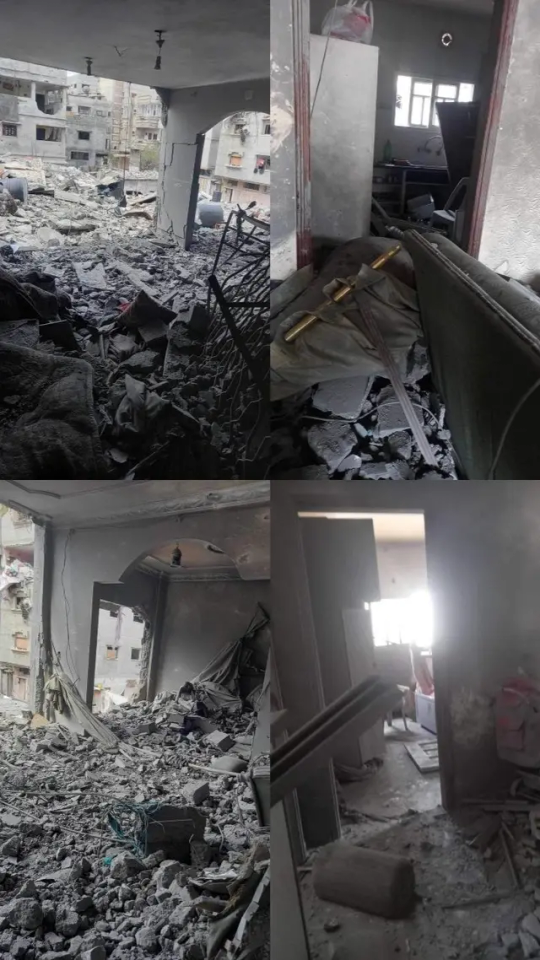
Jamal Shamia, Iam a criminal lawyer, lam suffering of many diseases hypertension and diabetic mellitus and Muscle spasms and always got shocked and coma .

Unfortunately, I was injured in the war and suffered a very serious injury, which was a blood clot in the hip joint area, which caused him many infections and the infection spread in the area. is currently in Gaza, and my home was destroyed at the beginning of the war. We have lost security and peace. We have witnessed how a single rocket can destroy your entire life, both your past and your future. Our dreams have been shattered. Now the future is unknown and dark. There is no home, no basic life essentials, no job. We are now seeking to leave this country for a life abroad and to obtain security. We estimate our loss to be at least $50,000 to rebuild a home and start our lives anew.

My wife, Mufida, is 62 years old. She traveled before the war to have surgery on her eye alone, and now she is stuck on the Egyptian side. She has no breadwinner and needs many medications and medical supplies.
After that, she suffered a broken hand due to the lack of necessary care for her. I want to collect money to go to her and support her.

Rasha Jamal Shamia and her husband, Khalil Abu Samaan, have two children, Mira and Omar. They have been forced to flee their home in Gaza City and are now living in a tent in Rafah, far from everything they once knew. Their home, their children’s education, and their future—everything is gone. Their days are filled with fear, and their nights bring no rest. The constant sound of bombs haunts them, and they have no way to provide their children with the life they deserve

Ahmad Jamal Shamia resides in Gaza and is a third-year student in dental school. He lost his education due to the devastating war in Gaza. He was studying at Al-Azhar University in Gaza, and his home was destroyed in the war. He is currently suffering from moving from one temporary shelter to another. Ahmad was a diligent, ambitious, and creative student who ranked first in his class. He didn't limit himself to what he learned in university. He attended courses and workshops online with Egyptian doctors to learn more and excel in his field. He always sought excellence and worked hard for it, and he loved helping all students.He now needs money to continue his education, which will cost him a lot of money since he will complete his studies in Egypt.

Vetted by:
Gazavetters no.#82
@90-ghost here
My link
PayPal account:

@sylvianritual @ana-bananya
@aristotels @bixlasagna @bonesashesglass @blackprinter @buttercuparry @briarhips @cagandante-communistoide @crimsaph @crispyartdev @determinate-negation @distillatoria @dontbelasagnax @dlxxv-vetted-donations @deepspaceboytoy @distillatoria @evilreceptionist @ehksidian @e @fr0ge @freeshfries98 @feluka @fromjanna @f3l1c1af0x @greenwingspino @group-oc-tournament @gottfried @garden-of-vegan @hojanaranja @ip2lb @jacksonharries @khanger @kibumkim @lishadra @lightning-in-your-teeth @mangocheesecake @mobileleprechaun @oursapphirestars @omegaversereloaded @phantomofthetacobell-blog @primmsfairytale @paper-mario-wiki @pcktknife @sayruq @soullesscoyote @sanleigh @spacefunclubs @tilltshift
14K notes
·
View notes
Text
Vatted by association
Click here
🚨Urgent humanitarian appeal 🚨
Please don't ignore🙏🙏🇵🇸
Despite the temporary cessation of fire, I am still living in the tent because I found my house a pile of rubble 💔💔 You can imagine spending your whole life in a tent that does not protect from the cold of winter or the heat of summer
I am now about to give birth to my third child in the tent in the extreme cold and I fear he will die. Please help me 🙏🙏 Yesterday my tent was severely damaged by the wind and rain. Please help me rebuild my house and remove the rubble



Also, my husband still needs a lot of treatment and medicines that I cannot buy due to their high price💔. He also needs to travel to get an eye transplant and treat the nerves in his left hand😭. Please, I need your help and donation urgently Conditions are still very difficult in Gaza and there are no signs of a safe, warm life💔


Please donate what you can
Be hope and support us Please 🙏🙏
8K notes
·
View notes
Text
🚨 We Need Your Kindness to Survive 🚨
Hello, My name is Mosab Elderawi, and I live in Gaza with my family. Life here has become harder than I ever imagined, and I’m writing this with hope in my heart that you might hear our story.
The ongoing war has devastated my family. We’ve lost 25 family members—each one a beloved part of our lives, taken too soon. I miss them deeply—their laughter, their presence, their love. Every day is a reminder of this unimaginable loss.

64.media.tumblr.com

64.media.tumblr.com
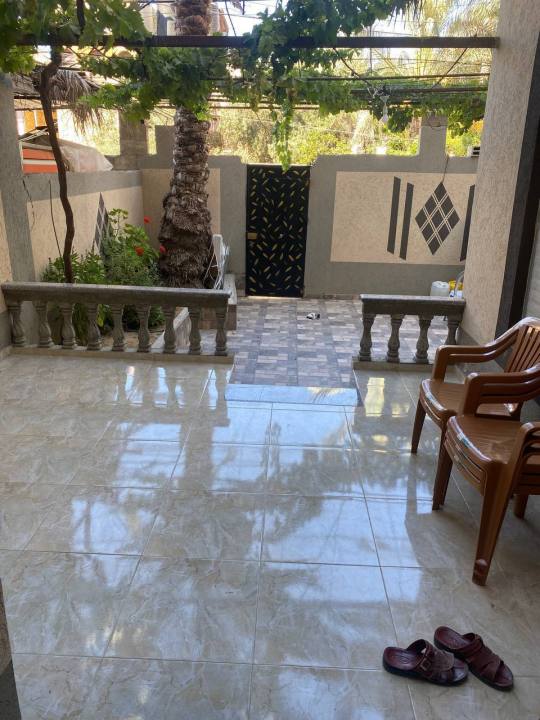
64.media.tumblr.com

64.media.tumblr.com

64.media.tumblr.com
We are now facing daily challenges to survive—things that most people take for granted, like food, clean water, and a safe place to sleep. The harsh realities of life here have replaced our dreams with the constant fight for survival.
Our Current Situation:
💔 Lost Stability: The war has left us without work or a stable source of income. 🍞 Basic Needs: Food and water are becoming harder to afford with rising prices and scarce resources. 📚 Dreams on Hold: Like so many here, my family’s dreams have been replaced by the need to simply survive. 😢 Unimaginable Loss: Losing 25 loved ones has left a void that can never be filled.
How You Can Help:
I’m sharing our story with the hope that someone out there might care. Even $5 can make a big difference for us, and if you’re unable to donate, just reblogging this post can help spread the word.
Your kindness, no matter how small, is something we’ll never forget.
What This Means to Us:
Your support is not about changing our entire situation—it’s about giving us a little relief, a little hope, and a way to keep going. We are not asking for much, and we understand if you can’t donate. Sharing our story is just as valuable to us as a donation.
Thank you for reading this far. It means the world to us to know that someone is listening. Your kindness gives us strength and helps us believe in a better tomorrow.
With all our gratitude, Mosab Elderawi and Family ❤️
✅️ Vetted by ✅️
@gazavetters, my number verified on the list is ( #309 )✅️
@fancysmudges @brokenbackmountain @just-browsing1222-deactivated20 @mothblossoms @aleciosun @fluoresensitive @khizuo @lesbiandardevil @transmutationisms @schoolhater @timogsilangan @appsa @buttercuparry @sayruq @malcriada @palestinegenocide @sar-soor @akajustmerry @annoyingloudmicrowavecultist @feluka @tortiefrancis @flower-tea-fairies @tsaricides @riding-with-the-wild-hunt @visenyasdragon @belleandsaintsebastian @ear-motif @kordeliiius @brutaliakhoa @raelyn-dreams @troythecatfish @theropoda @tamarrud @4ft10tvlandfangirl @queerstudiesnatural @northgazaupdates2 @skatezophrenic @awetistic-things @camgirlpanopticon @baby-girl-aaron-dessner @nabulsi @sygol @junglejim4322 @heritageposts @chososhairbuns @palistani @dlxxv-vetted-donations @illuminated-runas @imjustheretotrytohelp
82K notes
·
View notes
Text


I’m Anas Basil, a recent high school graduate with dreams of a brighter future through studying e-business management and building a career. But the war has shattered everything. After graduating with a 93% average, I enrolled at Khan Younis Training College (UNRWA), only to find that it’s now a shelter for displaced families instead of a place for education.
My younger brother, Ahmad, 14, is known as the "Doctor of the Future" because of his extraordinary talent in mathematics. However, the war has kept him out of school for two consecutive years. Ahmad is also a gifted football player who used to win tournaments, but the war has taken that away from him too.
The war forced our family to flee to Rafah, where we lived in a tent for several months. Every day is a struggle for survival—fetching water, gathering wood, and making a fire.







🎯 We are seeking €29,000 to:
- Secure safe passage out of Gaza and cover education fees to help us pursue our dreams.
- Provide Basic Essentials—food, clean water, and medical supplies—to support our family’s day-to-day survival in Gaza.
🔗 Donation link: 👇
✅ GoFundMe: https://gofund.me/32e5e95e
☑️ Via PayPal
Every donation, no matter the amount, brings us one step closer to our goal.
With gratitude,
Anas & Ahmad
✅ Our Fundraiser Vetted by ✅ 🔍 @gazavetters, on the list is (#83) 🔍 @90-ghost here 🔍 by association in this post
27K notes
·
View notes
Text
Etaf and her family need your support.
Etaf is a wife and mother of 5 from Ghazzah. Last year, she and her family's home was destroyed, a long with her husband's source of income and their car.

They were displaced for 200 days, all the way induring the hellish tribulations of genocide. Luckily, they were able to flee into Egypt; however their struggles are not over.
Due to their lack of income, Etaf and her husband struggle to provide their children with food, clothing, and education. On top of that, they are struggling to pay the rent on their house as winter approaches.
In order to help Etaf's children continue their education and to help the whole family afford basic necessities, they need to raise €100,000. So far, they've only managed to raise €5,690 and their last donation was 18 hours ago.
Please help them however you can; donate if you're able and share their campaign. Every contribution will help them rebuild their lives.
VETTED HERE (88)
TAG LIST (DM me for removal)
@whisperingmedows @e @rykerpuppy @renmemberme @t0w0bey @teddycuba @yogurtcake2000 @uchorusa @imp-panada @irunkefir @insufferablepilled @ichor-arrows @passion2lovvers @awesomepeoplehangingouttogether @dirkcapitationn @fatalbloomsinmoon @nabulsi @90-ghost @el-shab-hussein @aria-ashryver @northgazaupdates2 @sar-soor @flower-tea-fairies @palestinegenocide @gazagfmboost @palestine-info-uncensored @heba-20 @aces-and-angels @fairycosmos @greenpinkstraw @ibtisams @radicalgraff @r4ms3yy @thestrugglerrr @shug888 @decolonize-the-everything @fototingobug @gaza-evacuation-funds @g3wgaw @greydrits @gainnecorpse @gasfuzbj @hamsterdads @himbo-noxx @heijegerkannibal @juliccardi @jvstcallmespade @kk3o2 @katylokk @keff-fr @literallyneurodivergentandaminor @lenaeeessshhh @la7ma-mafrooma @lutielutik @certified-dentist @cemetaryvampire @chemautopsy @cryptid-catnip @vetted-gaza-funds @vantisanjo @blu-berriez @neptunerings @neatleaf @meit1
@fancysmudges @brokenbackmountain @mothblossoms @aleciosun @fluoresensitive @khizuo @lesbiandardevil @transmutationisms @schoolhater @timogsilangan @appsa @buttercuparry @sayruq @malcriada @palestinegenocide @sar-soor @akajustmerry @feluka @tortiefrancis @flower-tea-fairies @tsaricides @riding-with-the-wild-hunt @visenyasdragon @belleandsaintsebastian @ear-motif @kordeliiius @raelyn-dreams @troythecatfish @theropoda @tamarrud @4ft10tvlandfangirl @queerstudiesnatural @northgazaupdates2 @skatezophrenic @awetistic-things @baby-girl-aaron-dessner @nabulsi @sygold @junglejim4322 @heritageposts @chososhairbuns @palistani @dlxxv-vetted-donations @illuminated-runas @imjustheretotrytohelp
(sorry for the randomness of the tags, I just used what popped up. If anyone has advice on how to make a good taglist please tell me)
15K notes
·
View notes
Text

hi im putting a fundraiser for a palestinian family that is fundraising to pay for a newborn child's surgery. the child's foot was injured in israeli shelling. they will use the money to pay for the operation and buy groceries and other necessities. this is a medical emergency. i urge you to share and donate to this family. there have only been three donations in the last two days.
@familgazaamal1's fundraiser has been verified
donate here
7K notes
·
View notes
Text
🌟 A Cry for Help: My Family’s Struggle to Survive in Gaza 🌟
Hello, my name is Areej Kassab. I’m a 27-year-old English teacher and writer from Gaza, and I’m reaching out to you with a heavy heart and a desperate plea for support. My family and I are enduring unimaginable hardships as relentless bombings devastate our home and our dreams.


We are a family of 15—10 adults and 5 children. Every day is a battle for survival. Food is scarce, humanitarian aid is not reaching us, and my little nieces and nephews go to bed hungry. Among them is my sister, who is deaf, and another sister who has a newborn baby. They, too, are suffering in this crisis, and I’m doing everything I can to protect and provide for them.


💔 A Life in Ruins The war has robbed us of everything: safety, peace, and even the hope of a future here. My family’s needs are basic yet critical—food, clean water, diapers for the babies, gas for cooking, and other essentials to make it through each day.
With rising prices and limited access to necessities, we are struggling to provide even the most basic items. My sister’s home has been destroyed, and we are working together to ensure everyone has shelter, food, and warmth.
✨ My Plea for Your Support ✨ I’m a writer, and I’ve been documenting the harsh realities faced by my community under siege. But words can only do so much. We need action, and we need help. Your kindness can save us.
🙏 How You Can Help
Donate: Every contribution, no matter how small, brings us closer to securing the essentials we desperately need.
Share Our Story: If you can’t donate, please share this post to help us reach others who can.
Your support will help provide food for the children, clean water for my family, and basic supplies to help us survive this unimaginable crisis.
Thank you for reading, for caring, and for standing in solidarity with us. Together, we can create a lifeline for my family—a chance to live, to dream, and to hope again.
With love and gratitude, Areej Kassab ❤️
16K notes
·
View notes
Text
ok last thing. but what people fundamentally need to get through their heads is the significance of gaza fundraisers not being the same as like mutual aid when you're helping someone get groceries, because it is a genocide. there is insane deliberate scarcity and prices are unmanageable, because there is nowhere nearly enough for everyone, so only people who can pay can eat. and what positioning individual fundraisers as the only course of action does is quite simply give a tiny percentage of random people whose fundraisers take off the ability to pay those prices while thousands of others can't. and every one of those thousands of people without a fundraiser is suffering through the same inconceivably horrific reality. it is giving a few completely desperate people out of hundreds of thousands a slightly more favorable position in a horrific war economy of imposed scarcity. and what grassroots community kitchens do is try to mitigate in some small way that inconceivable hierarchy of who can pay and who can't, by stretching ingredients as far as they can last to cook meals at large scale and give them out at no cost. and obviously people are still going to send money to their friends and families because this is hell what else are we supposed to do but please just think about that before promoting endless individual fundraisers as somehow the most ethical way to help
46K notes
·
View notes
Text

The Oosterscheldekering (Eastern Scheldt storm surge barrier) 1986
Noord-Beveland, Netherlands
2K notes
·
View notes
Text




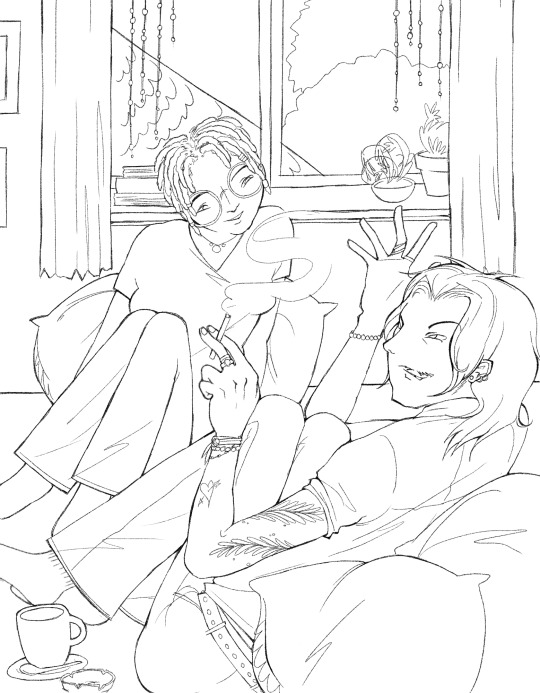
Hello Tungler
#art#oc#151 870#digital art#hellbreak#original#oc art#cain#artists on tumblr#leviathan#nick#malek#misato#david#nonsense#aimée#cynthia#wow so many characters in 1 post#original character
4 notes
·
View notes
Text

What are you trying to atone for?
341 notes
·
View notes
